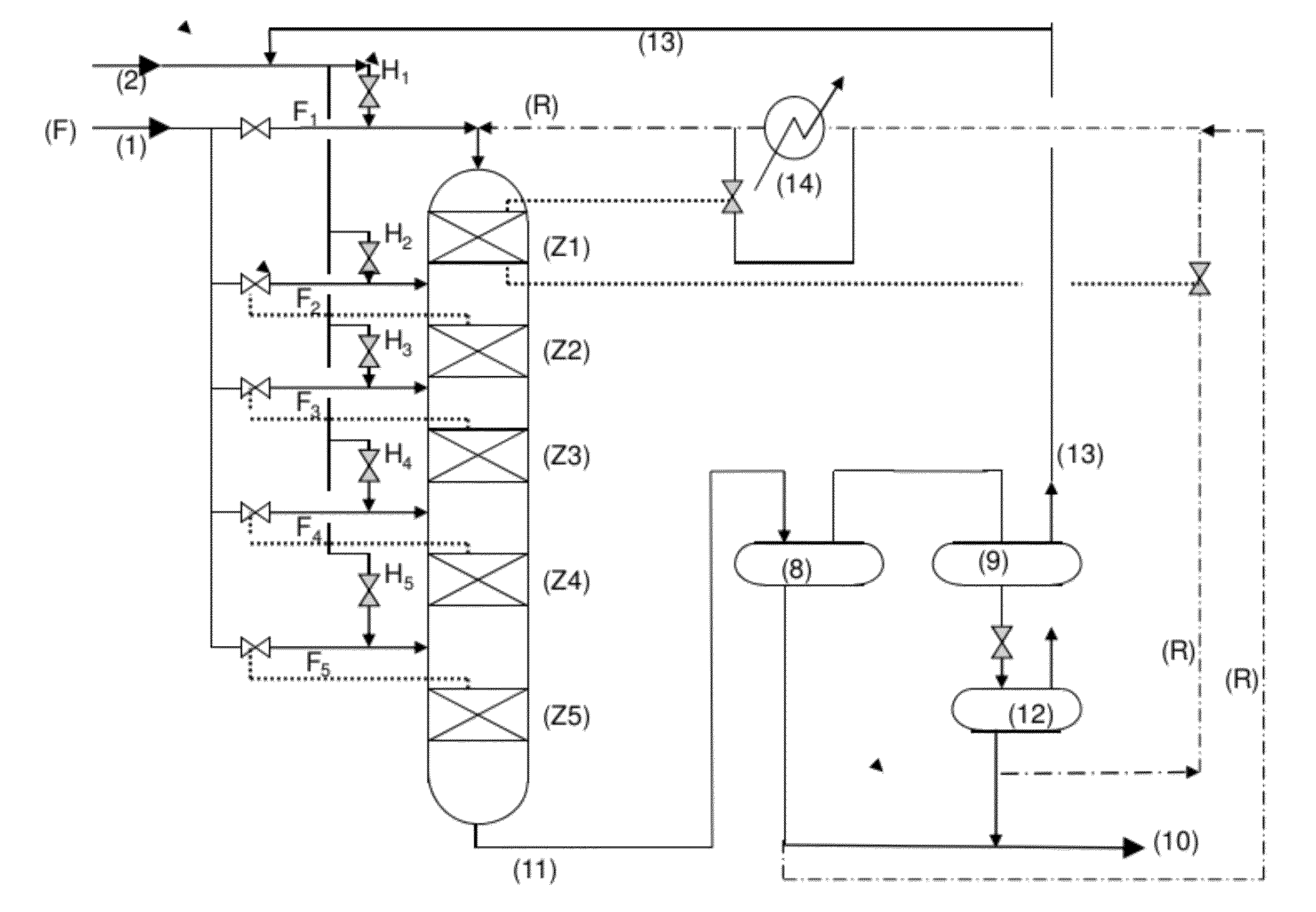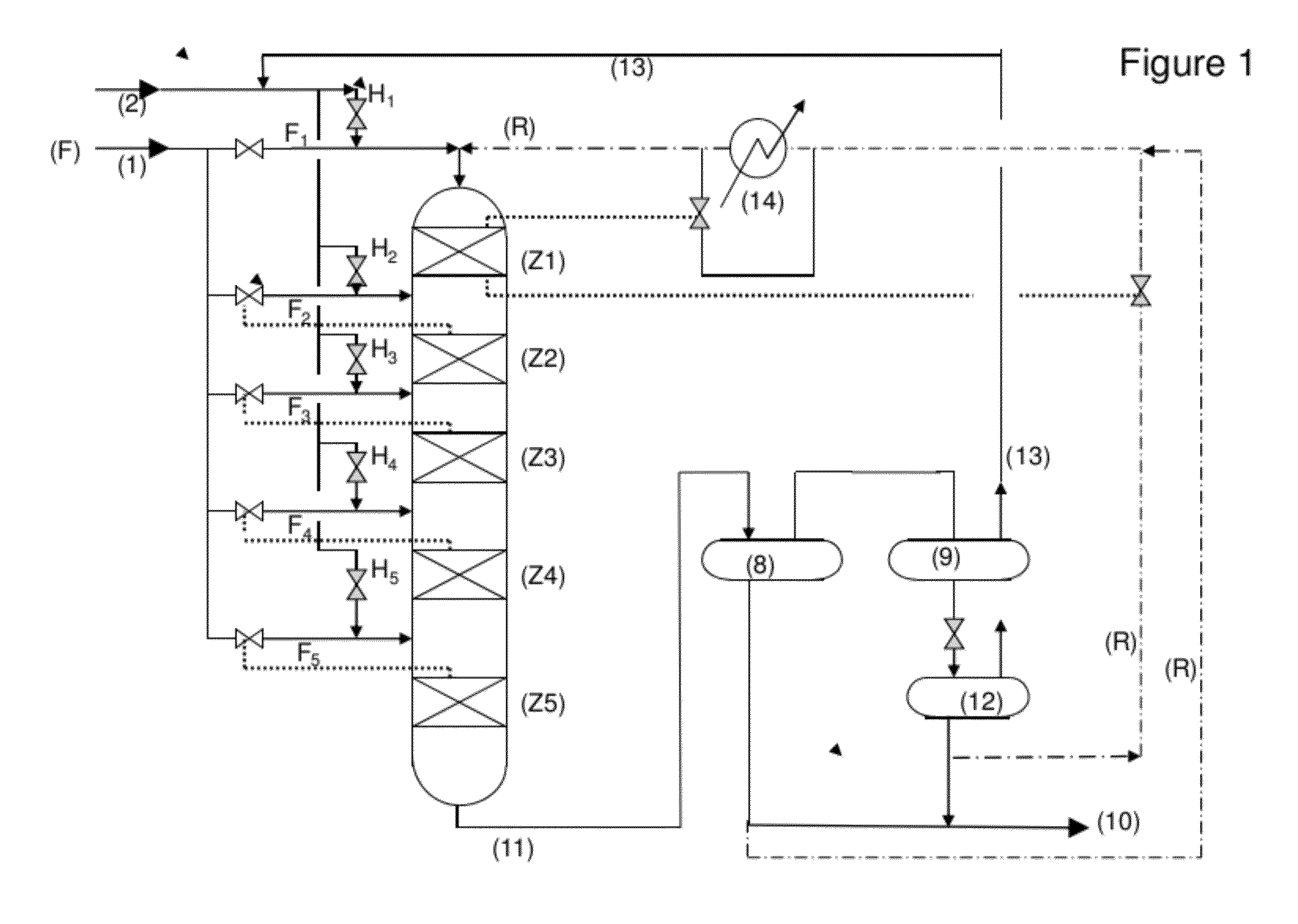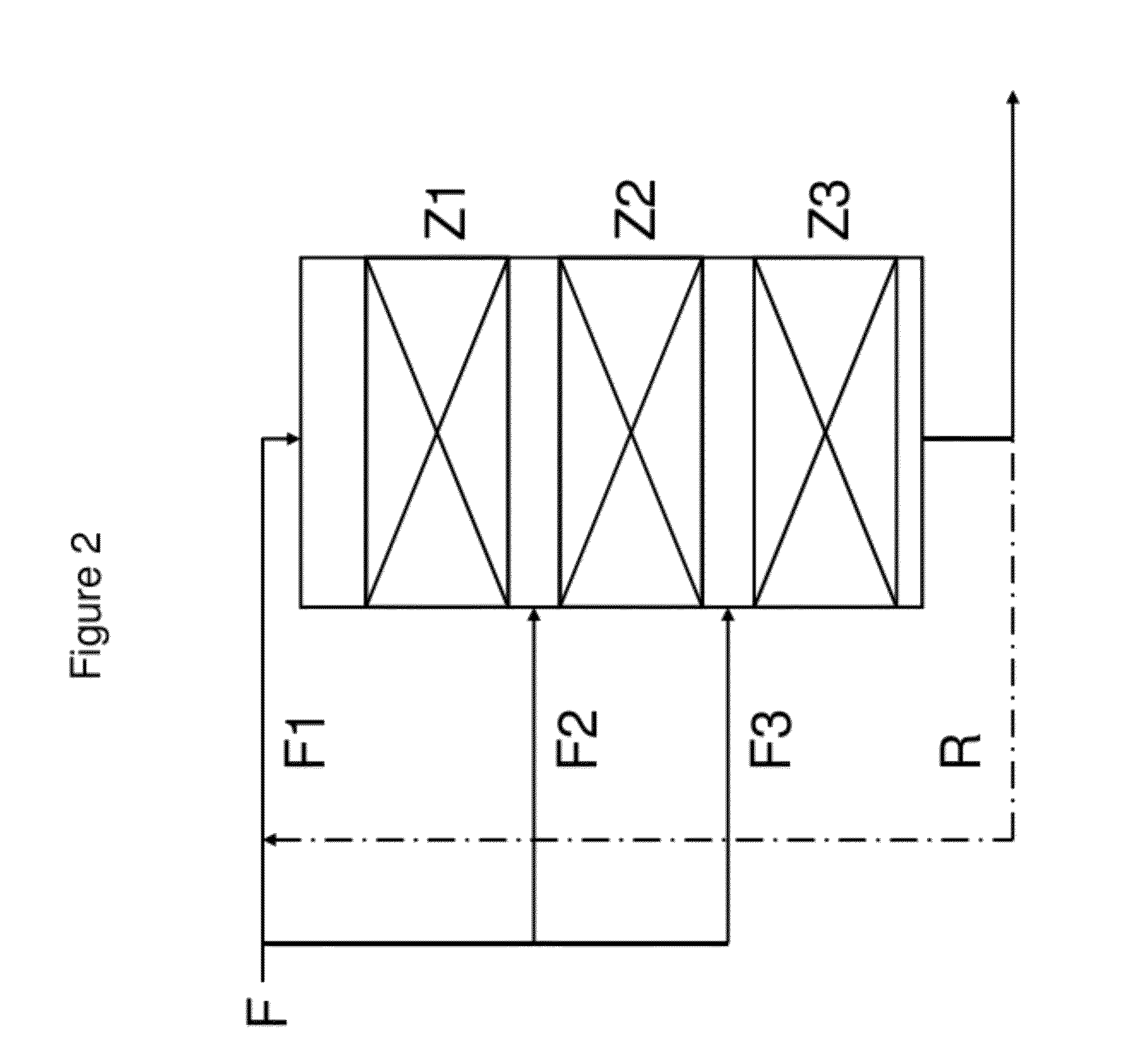Production of paraffinic fuels from renewable materials using a continuous hydrotreatment process
- Summary
- Abstract
- Description
- Claims
- Application Information
AI Technical Summary
Benefits of technology
Problems solved by technology
Method used
Image
Examples
example 2
In Accordance with the Invention
[0173]The same unrefined feed as in the preceding example (rapeseed oil) was treated. The catalyst and its preparation were identical to that described in Example 1. The operating conditions for the hydrotreatment section were identical to those used in Example 1.
[0174]Strictly the same quantity of recycle liquid injected with the unrefined feed was used, i.e. 100 g / h, which meant that the total recycle ratio by weight was identical and equal to 1.0.
[0175]In contrast, the operation was carried out such that on the first catalytic zone, there was a very high degree of dilution between the recycle and the feed injected into the catalytic zone Z1. This ratio was 11 g of liquid recycle per 1 g of unrefined feed injected into zone Z1. Table 2b indicates the flow rates of each of the three flows of feed as well as the diluent / unrefined feed ratios for each of the 3 catalytic zones.
TABLE 2bOperating conditions for hydrotreatment sectionand characteristics of...
PUM
 Login to View More
Login to View More Abstract
Description
Claims
Application Information
 Login to View More
Login to View More - R&D
- Intellectual Property
- Life Sciences
- Materials
- Tech Scout
- Unparalleled Data Quality
- Higher Quality Content
- 60% Fewer Hallucinations
Browse by: Latest US Patents, China's latest patents, Technical Efficacy Thesaurus, Application Domain, Technology Topic, Popular Technical Reports.
© 2025 PatSnap. All rights reserved.Legal|Privacy policy|Modern Slavery Act Transparency Statement|Sitemap|About US| Contact US: help@patsnap.com



